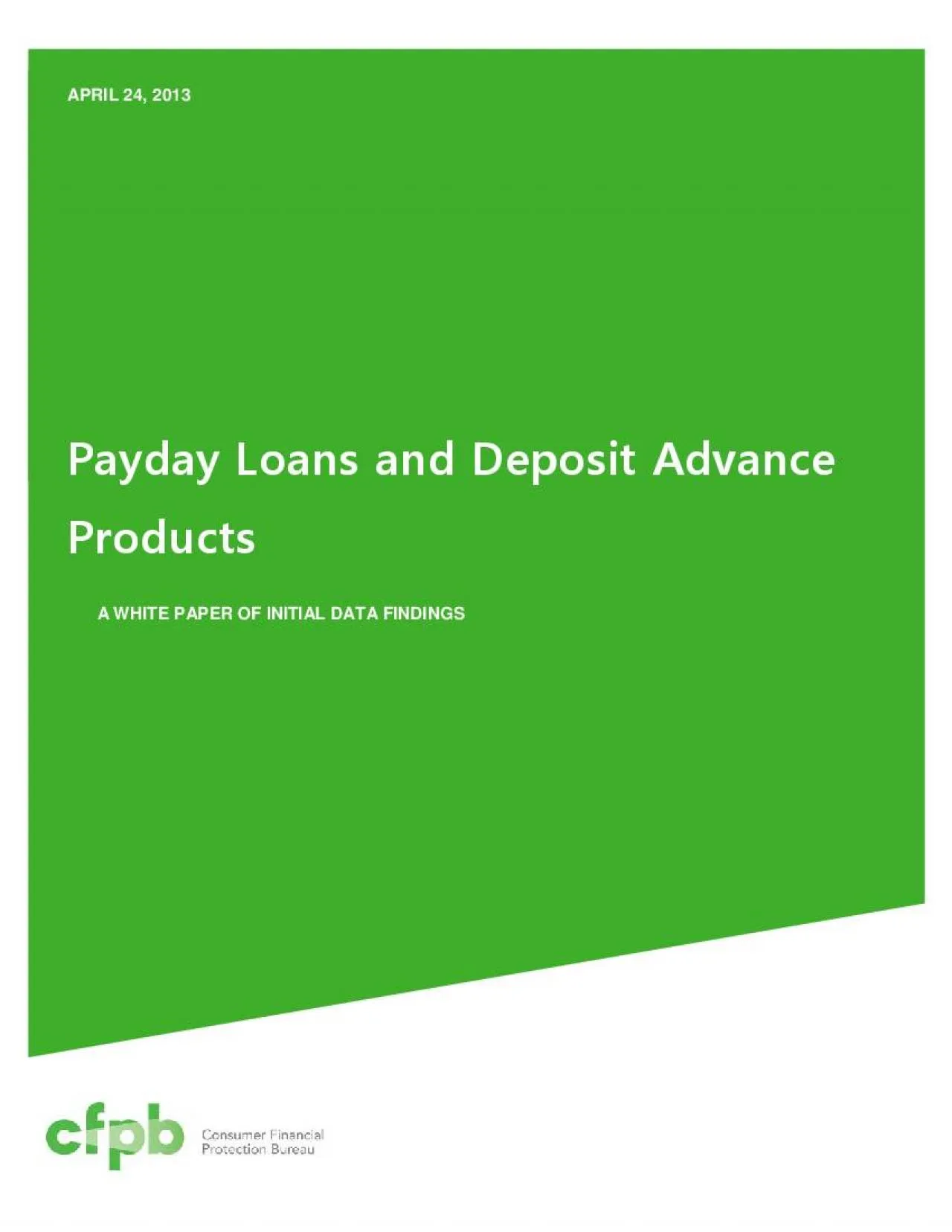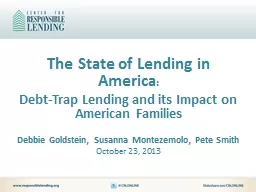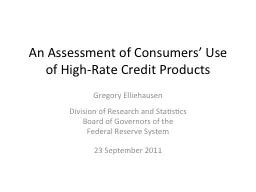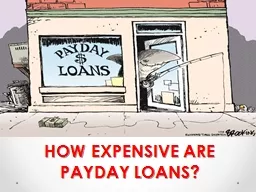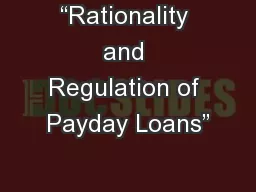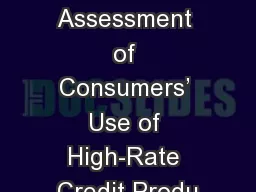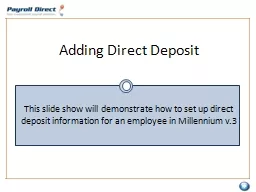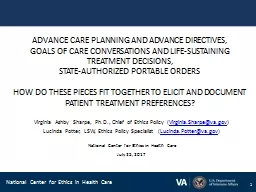PDF-Payday Loans and Deposit Advance Products WHITE PAPEROF INITIAL DATA F
Author : oconnor | Published Date : 2021-10-11
APRIL 24 2013x0000x0000CONSUMER FINANCIAL PROTECTION BUREAUx0000x00002 xMCIxD 1 xMCIxD 1 Table of ContentsIntroduction1331331331331331331331331331331331331331331331331331331331331331331331333Overvi
Presentation Embed Code
Download Presentation
Download Presentation The PPT/PDF document "Payday Loans and Deposit Advance Product..." is the property of its rightful owner. Permission is granted to download and print the materials on this website for personal, non-commercial use only, and to display it on your personal computer provided you do not modify the materials and that you retain all copyright notices contained in the materials. By downloading content from our website, you accept the terms of this agreement.
Payday Loans and Deposit Advance Products WHITE PAPEROF INITIAL DATA F: Transcript
Download Rules Of Document
"Payday Loans and Deposit Advance Products WHITE PAPEROF INITIAL DATA F"The content belongs to its owner. You may download and print it for personal use, without modification, and keep all copyright notices. By downloading, you agree to these terms.
Related Documents

